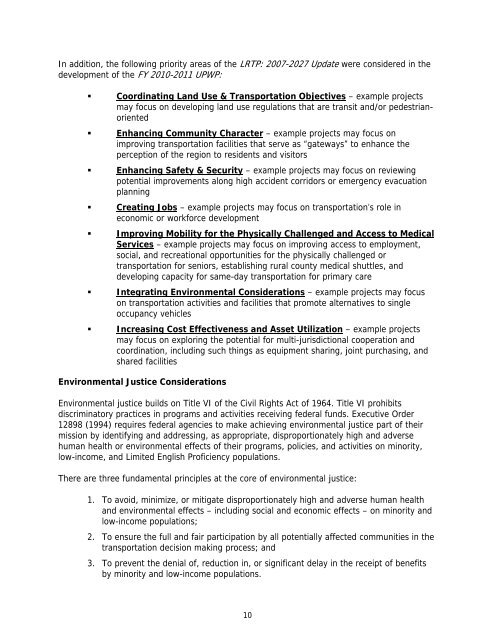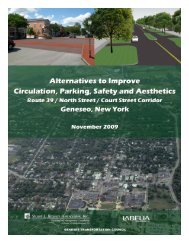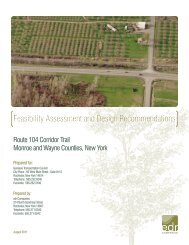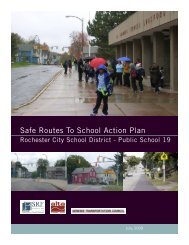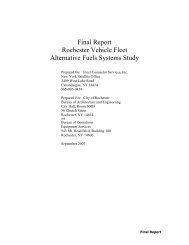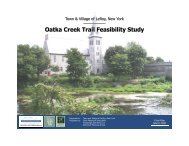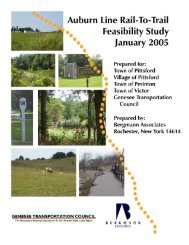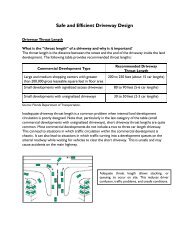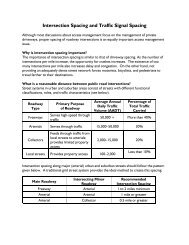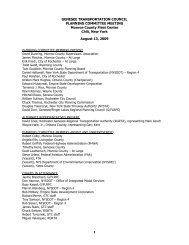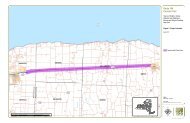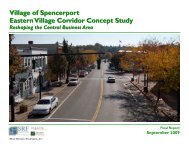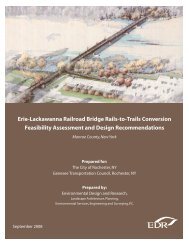FY 2010-2011 UPWP Task Descriptions - Genesee Transportation ...
FY 2010-2011 UPWP Task Descriptions - Genesee Transportation ...
FY 2010-2011 UPWP Task Descriptions - Genesee Transportation ...
You also want an ePaper? Increase the reach of your titles
YUMPU automatically turns print PDFs into web optimized ePapers that Google loves.
In addition, the following priority areas of the LRTP: 2007-2027 Update were considered in the<br />
development of the <strong>FY</strong> <strong>2010</strong>-<strong>2011</strong> <strong>UPWP</strong>:<br />
• Coordinating Land Use & <strong>Transportation</strong> Objectives – example projects<br />
may focus on developing land use regulations that are transit and/or pedestrianoriented<br />
• Enhancing Community Character – example projects may focus on<br />
improving transportation facilities that serve as “gateways” to enhance the<br />
perception of the region to residents and visitors<br />
• Enhancing Safety & Security – example projects may focus on reviewing<br />
potential improvements along high accident corridors or emergency evacuation<br />
planning<br />
• Creating Jobs – example projects may focus on transportation’s role in<br />
economic or workforce development<br />
• Improving Mobility for the Physically Challenged and Access to Medical<br />
Services – example projects may focus on improving access to employment,<br />
social, and recreational opportunities for the physically challenged or<br />
transportation for seniors, establishing rural county medical shuttles, and<br />
developing capacity for same-day transportation for primary care<br />
• Integrating Environmental Considerations – example projects may focus<br />
on transportation activities and facilities that promote alternatives to single<br />
occupancy vehicles<br />
• Increasing Cost Effectiveness and Asset Utilization – example projects<br />
may focus on exploring the potential for multi-jurisdictional cooperation and<br />
coordination, including such things as equipment sharing, joint purchasing, and<br />
shared facilities<br />
Environmental Justice Considerations<br />
Environmental justice builds on Title VI of the Civil Rights Act of 1964. Title VI prohibits<br />
discriminatory practices in programs and activities receiving federal funds. Executive Order<br />
12898 (1994) requires federal agencies to make achieving environmental justice part of their<br />
mission by identifying and addressing, as appropriate, disproportionately high and adverse<br />
human health or environmental effects of their programs, policies, and activities on minority,<br />
low-income, and Limited English Proficiency populations.<br />
There are three fundamental principles at the core of environmental justice:<br />
1. To avoid, minimize, or mitigate disproportionately high and adverse human health<br />
and environmental effects – including social and economic effects – on minority and<br />
low-income populations;<br />
2. To ensure the full and fair participation by all potentially affected communities in the<br />
transportation decision making process; and<br />
3. To prevent the denial of, reduction in, or significant delay in the receipt of benefits<br />
by minority and low-income populations.<br />
10


